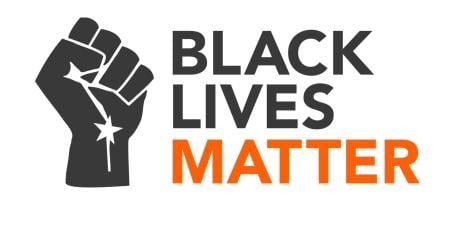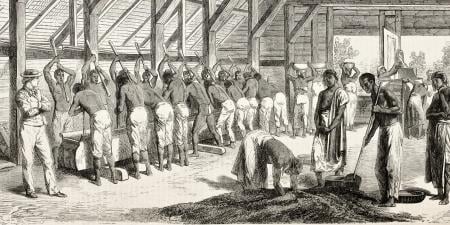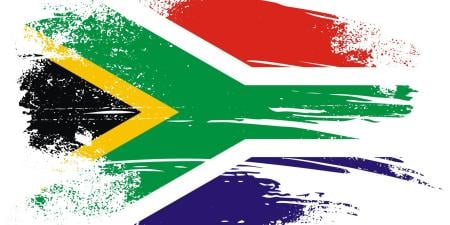Doctors are integral to the practice of modern torture. Some devise torture techniques (like rectal water infusions) in order to minimize incriminating scars. Some monitor and treat prisoners undergoing torture in order to prevent them from unintentionally dying. Some falsify medical records and death certificates to assist regimes in concealing injuries or deaths from torture. Many claim to act under duress, but the example set by the majority of their national colleagues who either fight against torture or refuse to collaborate with the practice belies such claims [1].
Torture doctors work for fascist dictatorships such as China, Uzbekistan, and North Korea. They also work for democracies such as the United States, Portugal, and Spain. Some see and ignore torture victims who are brought by police or soldiers to public clinics or hospitals. Others hold military rank or contracts with police and see tortured persons in government prisons.
Torturing with Impunity
After World War II, only a few of the several hundred Nazi torture doctors and none of the Japanese torture doctors were punished [2, 3]. In 1947, the new World Medical Association (WMA) endorsed a British Medical Association working paper that asserted that doctors who participated in torture were personally responsible and should be individually punished to deter such acts [4]. The WMA called on the German medical associations to expel such doctors, thereby revoking their medical licenses, and endorsed criminal “judicial punishment of such crimes” [5].
But doctors’ torturing with impunity remained the rule for decades. A fair amount is known about Soviet-era psychiatric abuse of dissidents; none of the doctors involved were punished. Germany ignored Stasi torture doctors. Great Britain gave a free pass to physician participation in torture during decolonialization and the more recent “troubles” in Northern Ireland [6]. Although, in 1992, the British Medical Association recommended that alleged torture doctors be “fully and fairly investigated and that those found culpable [be] barred from medical practice and from membership in professional associations” [7], it explicitly said in 2009 that it would not investigate allegations against physicians [8]. The United States and its professional associations have allowed medicalized torture in “war-on-terror” prisons to pass without punishment or censure [9-11]. There is sketchy knowledge of physician complicity with penal amputations and flogging across the Arab and Asian world, and the commonplace medical collaboration with torture in the world’s prisons and police stations (for example, in India) is only dimly outlined [11-18]. The Doctors Who Torture Accountability Project lists 89 countries where it is confirmed that doctors have collaborated with torture with complete impunity [19]. (The site is unable to assess whether physicians have collaborated with torture in 49 additional countries, even though many of these countries are known to torture.) A huge amount of work is needed to discover the full extent of medical complicity with torture.
Attempts to Hold Doctors Accountable for Participation in Torture
In 1975, a Greek physician, Dimitrios Kofas, one of many government officials who tortured for the military junta, was prosecuted [20, 21]. He was court martialed, sentenced to jail, served at least part of his time, and is apparently now practicing medicine again.
A broader effort to systematically punish torture doctors arose during the years of crumbling juntas in Argentina, Brazil, Chile, and Uruguay [7]. The human rights movement supplies the energy that spurs medical boards or courts to pursue these physicians. In Brazil, Chile, and Uruguay, medical associations, in collaboration with local and international human rights groups, took the lead. The Medical Association of Argentina took no action; courts punished torture doctors as criminals, sending ten to jail, and several trials are still ongoing [19]. Since Kofas’s punishment, the cases worldwide have continued to accelerate—12 physicians were punished by medical groups or courts in the ’80s and 20 in the ’90s, and there have been 51 more cases since the turn of the century [19]. By 2015, the number of countries in which torture doctors had been punished had risen to 16 [19]. In sum, since 1975, 85 physicians from 16 countries (Argentina, Brazil, Chile, Egypt, Great Britain, Greece, Guyana, India, Italy, Pakistan, Rwanda, Sri Lanka, Serbia, South Africa, Turkey, and Uruguay) have been punished for abetting torture or war crimes [19].
I note from personal review of public and private primary sources that this period has also witnessed an accelerating number of failed prosecutions, which are only partially countable because of rules and laws regarding confidentiality. These prosecutions, although unsuccessful, are nevertheless a sign of the increasing strength of the movement to hold physicians accountable for torture, as they are part of the expanding base of prosecutions upon which successful prosecutions rest.
Why Punish Torture Doctors?
Although courts, medical licensing boards, and medical societies have different purposes and powers, it is worthwhile for any of them to hold torture doctors accountable. Courts punish crimes and may impose prison terms or fines or order restitution. Licensing boards are stewards of medical professionalism; they often revoke or suspend the licenses of physicians who have violated trust in the profession. The loss of a medical license is a serious punishment. Punishments may be levied for dishonorable conduct, such as sex with a patient, even when such acts are not illegal. In this sense, the discretionary power of medical boards extends beyond the law and does not require conviction of a crime. Medical societies are also stewards of medical professionalism, although their punishments are limited to censure and expulsion.
Some argue that physicians’ institutions should not press for accountability [22]. According to this view, since it is governments that authorize torture, responsibility for reform and accountability is a political or judicial responsibility. The problem with this argument is that regimes, including their courts, are loath to act against physicians who tortured in the course of their government service. Demurral by medical institutions comes at a high price, however.
- It violates the public trust that doctors will advance and preserve the health of all persons.
- It offers a welcome cover to doctors who abet torture or are considering doing so and puts medical institutions in the position of being tacitly complicit with violating and undermining international law.
- It encourages officials in torturing regimes to believe that they can safely trust doctors to abet and conceal their crimes.
- It deprives tortured prisoners and their relatives of solidarity from a respected element of civil society that has important connections to human rights advocates.
- It undermines international solidarity. Physicians protesting torture and tortured persons in other nations need global support.
In its most fundamental sense, accountability is less about punishment than about driving a wedge between torturing governments and the doctors whose help, fraud, and silence they condone. Accountability for doctors’ behavior allows light to shine on a nation’s darkest places.
How to Promote Accountability for Torture Doctors
Several steps are required to advance holding torture doctors accountable.
First, national medical associations must endorse strong standards against physician complicity, such as the WMA’s “Declaration of Tokyo—Guidelines for Physicians Concerning Torture and other Cruel, Inhuman or Degrading Treatment or Punishment in Relation to Detention and Imprisonment” [23]. The World Medical Association, founded in response to the abuses of Nazi medicine, should require national medical associations to endorse such standards as a condition of membership. In response to the 1997 flight of several African and Asian doctors to Europe to avoid prosecution for war crimes, the WMA passed “Statement on the Licensing of Physicians Fleeing Prosecution for Serious Criminal Offences,” which asserts that “a physician who perpetrates such crimes [torture, war crimes, or crimes against humanity] is unfit to practice medicine” [24]. It urged national medical associations
to ensure that physicians against whom serious allegations of participation in torture, war crimes or crimes against humanity have been made are not able to obtain licenses to practice until they have satisfactorily answered these allegations. National medical associations that do not have licensing powers should inform the appropriate licensing authorities of information they receive regarding physicians against whom serious allegations of participation in torture, war crimes or crimes against humanity have been made, and should encourage the licensing authorities to take appropriate actions to ensure that such physicians have satisfactorily answered these allegations before granting them licenses to practice [24].
Such a standard should apply not only to immigrant physicians but also to physicians in their own countries.
Second, the WMA should compile and endorse procedural guidelines and casebooks to show courts and medical boards how to convene and conduct cases against doctors who are alleged to have tortured. The WMA should also publish a comprehensive online index of cases of physicians who have been punished by a court or licensing board for torture or other war crimes. These two steps would show that prosecution and punishment of torture physicians is possible.
Third, the WMA should establish a secure web portal to enable persons to report allegations of physician complicity with torture to the United Nations Rapporteur on Torture and/or other human rights groups for investigation.
Fourth, national medical associations should support legislation and policies to ensure that state licensing boards may restrict or revoke licenses for war crimes and torture even without a criminal conviction because they constitute unprofessional conduct. Licensing boards should inform their practitioners of this position, as happened in California [25].
Fifth, national medical associations and the WMA should perform and publish audits to assess whether courts and licensing boards are holding torture doctors accountable. Such audits should assess the generalperformance of accountability rather than oversee individual cases. For example, a finding that there is ample evidence that physicians in the United States, Portugal, Israel, Russia, and Singapore have abetted torture and that no censure or sanctions have been levied would suffice.
Conclusion
The partnership between torturers and physicians can be summarized as follows:
- Physician involvement in torture coextends with the global practice of torture.
- Physicians play key roles in designing, implementing, monitoring, and concealing torture.
- Lack of accountability for physician torturers is the norm. Licensing boards rarely revoke or suspend licenses, medical associations rarely censure, and courts rarely convict torture doctors.
- Major medical associations do not offer standards or model procedures for holding torture doctors accountable.
- Accountability, although rare, is becoming more common because of pressure arising outside of the medical profession [26].
Torture, although global, is decreasing. The end of chattel slavery, ecclesiastical torture, and the illegalization of state torture had the most dramatic impact [27]. It is past time for the medical community to firmly place itself against impunity for its torture doctors.
References
-
Miles SH. Doctors Who Torture: The Pursuit of Justice. Minneapolis, MN: self-published; 2015. http://www.amazon.com/Doctors-who-Torture-Pursuit-Justice-ebook/dp/B00VFGEWWK. Accessed July 29, 2015.
-
Spitz V. Doctors from Hell: The Horrific Account of Nazi Experiments on Humans. Boulder, CO: Sentient; 2005:50.
-
Harris SH. Factories of Death: Japanese Biological Warfare, 1932-1945, and the American Cover-up. 2nd ed. New York, NY: Routledge; 2002.
-
Medical Education Trust. Statement of the Council of the British Medical Association for submission to the World Medical Association, June 1947. http://www.mededtrust.org.uk/warcrimes. Accessed June 28, 2015.
-
Editorial. Bull World Med Assoc. 1949;1(1):13.
-
Miles, Doctors Who Torture, chaps 22-23.
-
British Medical Association. Medicine Betrayed: The Participation of Doctors in Human Rights Abuses: Report of a Working Party. London, UK: Zed Books; 1992:195.
-
British Medical Association. BMA procedures for human rights interventions. 2009. http://bma.org.uk/-/media/files/pdfs/working%20for%20change/improving%20health/proceduresforhrinterventions.pdf. Accessed July 30, 2015.
-
Institute on Medicine as a Profession. Ethics Abandoned: Medical Professionalism and Detainee Abuse in the War on Terror. New York, NY: Institute on Medicine as a Profession; 2013. http://imapny.org/wp-content/themes/imapny/File%20Library/Documents/IMAP-EthicsTextFinal2.pdf. Accessed July 30, 2015.
-
Miles SH. Oath Betrayed: America’s Torture Doctors. 2nd ed. Berkeley, CA: University of California Press; 2009.
-
Senate Select Committee on Intelligence. Committee study of the Central Intelligence Agency’s detention and interrogation program. Revised December 3, 2014. http://fas.org/irp/congress/2014_rpt/ssci-rdi.pdf. Accessed June 28, 2015.
-
US Department of State Bureau of Democracy, Human Rights, and Labor. Brunei. March 8, 2006. http://www.state.gov/j/drl/rls/hrrpt/2005/61602.htm. Accessed August 7, 2015.
-
India House of Commons. India—punishment of flogging. HC Debate. 1880;253:cc960-cc962. http://hansard.millbanksystems.com/commons/1880/jun/28/india-punishment-of-flogging. Accessed August 7, 2015.
-
Amnesty International. Jordan: Human Rights Protection After the State of Emergency. London, UK: Amnesty International; 1990.
-
Amnesty International. Qatar: briefing to the United Nations Committee against Torture. October 12, 2012. https://www.amnesty.org/download/Documents/24000/mde220012012en.pdf. Accessed August 7, 2015.
-
Bahrampour F. The caning of Michael Fay: can Singapore’s punishment withstand the scrutiny of international law? Am Univ Int Law Rev. 1995;10(3):1075-1108. http://digitalcommons.wcl.american.edu/cgi/viewcontent.cgi?article=1442&context=auilr. Accessed August 7, 2015.
-
Amnesty International. Whipping in Pakistan. February 23, 1990. https://www.amnesty.org/download/Documents/200000/asa330011990en.pdf. Accessed August 7, 2015.
-
Amnesty International. A Blow to Humanity: Torture by Judicial Caning in Malaysia. 2010. http://www.univie.ac.at/bimtor/dateien/malaysia_ai_2010_blow_to_humanity.pdf. Accessed August 7, 2015.
-
The Doctors Who Torture Accountability Project website. http://doctorswhotorture.com. Accessed August 3, 2015.
-
Amnesty International. Torture in Greece: The First Torturers’ Trial 1975. London, UK: Amnesty International Publishers; 1977:72.
-
Stover E, Nightingale EO. The Breaking of Bodies and Minds: Torture, Psychiatric Abuse, and the Health Professions. New York, NY: WH Freeman; 1985.
-
Gross ML. Moral Dilemmas of Modern War: Torture, Assassination, and Blackmail in an Age of Asymmetric Conflict. New York, NY: Cambridge University Press; 2010:233-251.
-
World Medical Association. WMA Declaration of Tokyo—Guidelines for Physicians Concerning Torture and Other Cruel, Inhuman or Degrading Treatment or Punishment in Relation to Detention and Imprisonment. Revised May 2006. http://www.wma.net/en/30publications/10policies/c18/index.html. Accessed June 28, 2015.
-
World Medical Association. WMA statement on the licensing of physicians fleeing prosecution for serious criminal offences. Adopted November 1997. http://www.wma.net/en/30publications/10policies/c16/. Accessed June 28, 2015.
-
SJR 19, 2007-2008 Reg Sess (Ca 2008). http://www.leginfo.ca.gov/pub/07-08/bill/sen/sb_0001-0050/sjr_19_bill_20080311_amended_sen_v97.html. Accessed July 30, 2015.
-
Miles, Doctors Who Torture, chap 8.
-
Pinker S. The Better Angels of Our Nature: Why Violence Has Declined. New York, NY: Penguin Books; 2012:144-149.



